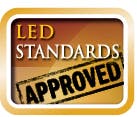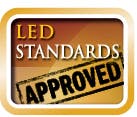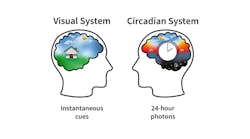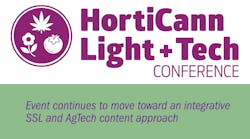JIANZHONG JIAO acknowledges the achievements of the Lighting Research Center, and in particular Nadarajah Narendran, in contributing to the SSL-centric standards setting process that has in part enabled the broad commercialization of LED-based lighting.
Solid-state lighting (SSL) standardization has gone through a long journey. It has been a collaborative effort among industry participants, including manufacturers and test labs, government agencies, and applied researchers from academia. SSL commercialization has been well accomplished, and its energy saving and light quality benefits have been widely recognized. LED lighting standards, which are based on the industry's best practices, played a critical role in the SSL commercialization process. The principles of these standards are objective, consistent, and scientifically sound, and a major measure of these principles is the evidence of data and rationale, often established through applied research in academia or by a consortium.
Interested in articles & announcements on LED and lighting standards?
The Lighting Research Center (LRC) at Rensselaer Polytechnic Institute in Troy, NY is one of the academic institutions consistently engaged in applied research for SSL. The LRC's current research topics include technical issues related to light sources, lamps, and controls, as well as applications such as transportation, horticulture, and lighting for health, all showing the extent of the LRC's grasp on both the technology and human factors of lighting. I recently had the opportunity to attend the LRC sponsors' conference, an annual gathering that provides insights on not only where lighting is headed and what challenges exist, but also on what possibilities are out there, even if their chance for success seems remote. This led me to reflect on how much LED lighting and the industry have changed and, in particular, on how well we have established LED lighting standards that assist these changes.
Dr. Nadarajah Narendran in the lab at Rensselaer's Lighting Research Center, directing LED research efforts that influenced SSL standards development.
In the journey of SSL commercialization and standards development, Dr. Nadarajah Narendran, a faculty member at the LRC and a colleague whom I have come to know and work with for over 20 years, played a pioneering role. In the early days of SSL, Narendran had been conducting LED research for a few years at that point and had been one of the founding organizers of the first LED lighting research conferences, hosted by SPIE (an international society for optics and photonics) in 2001. Through the LRC, he founded the group known as ASSIST (Alliance for Solid-State Illumination Systems and Technologies), which pooled its members' money and organized under the mission of promoting the adoption of white LEDs for general lighting by conducting research to overcome technological hurdles.
Needless to say, at that time there were many, many technological hurdles. One of the biggest challenges was understanding the true lifetime of LEDs and how to predict life. Narendran's research in the early years had shown that LEDs often did not live up to the long-life claims once they were assembled into lighting systems, and the primary reason was heat. Further, even if an LED was still operating, it did not mean that it was generating enough light output to be useful. Through ASSIST, Narendran and his research team at the LRC conducted experiments to develop guidance on how to define LED life, the effects of heat on life, and how to test, predict, and report life in a standard manner. Following this work, an IES technical committee took up the mantle and in 2008 published the IES LM-80 standard for measuring lumen depreciation, with Narendran's research as its basis. Later, Narendran's and ASSIST's work on LED light engines was referenced for the development of IES LM-82.
At this point, general illumination with LEDs was starting to become a possibility because of improvements in light output, color, and system-integrated life. But comparisons between traditional and LED sources were showing the weakness of comparing apples to oranges in lighting applications. With lumens-per-watt driving the whole industry, LEDs couldn't measure up. Narendran saw this as an opportunity to ask the question, "What if we're measuring the wrong thing?"
An earlier theory advanced by then-LRC director Dr. Mark Rea and LRC research scientist Dr. John Bullough sought to change the industry's thinking by promoting a measurement that considers how well a lighting system performs to meet the needs of an application, rather than a strict luminous efficacy measurement. The IES had already been publishing recommended practices for lighting roadways, parking lots, retail facilities, and many others. These existing application guidelines could become the basis for comparing LEDs with traditional light sources rather than looking at a lighting system out of context. Narendran and ASSIST ran with this idea and explored how to measure and compare the performance of lighting in its intended application. These investigations led to technology-neutral methods of measuring "application efficacy" that showed that LEDs could often match if not outperform traditional lighting, even when the traditional luminous efficacy values were not in alignment.
Fast-forwarding to the present, ASSIST celebrated its 15th anniversary in 2017 and LEDs have become the de facto light source. Because of LED technology and the strides it has made, lighting companies are now switching gears and, in a sense, becoming technology companies. LEDs now afford the opportunity to explore the possibilities of connected lighting, building system integration, remote control and monitoring, and intelligent buildings - all of which seemed to have a remote chance for success not too long ago. Here, too, Narendran is forging a path with studies related to LED connected lighting and controls, real-time system monitoring, and using LED lighting as a data-gathering vehicle. Manufacturing of lighting components through 3D printing is also in his view. It seems that the possibilities are now endless.
As the process for developing and implementing LEDs and LED lighting standards continues, it is worth noticing the contributions made by Narendran and this team, and to further recognize the LRC's achievements in assisting SSL commercialization.
DR. JIANZHONG JIAO, an internationally recognized lighting expert, is an independent consultant for LEDs and lighting technologies. He has been actively involved in LED and LED lighting standard development activities, technical conferences, and industry consortia. Currently he serves on the IESNA Testing Procedures, Roadway Lighting, Computer, and Light Source Committees. He is also vice chair of the ANSI SSL Light Source Working Groups, and at present works with many other technical organizations, groups, and symposia, in addition to being a member of the Technical Panel of Strategies in Light. He can be reached at [email protected].








![FIG. 1. The timeline of light sources relied upon by humans has evolved from one focused on the source of illumination for visual acuity alone to one that applies advanced research to evoke or inhibit certain responses from the non-visual system. The research will deliver new information to the solid-state lighting (SSL) industry for producing metrics that enable standards and best practices development for products and lighting designs. [Image credits: All illustrations courtesy of Allison Thayer, the Lighting Research Center (LRC).] FIG. 1. The timeline of light sources relied upon by humans has evolved from one focused on the source of illumination for visual acuity alone to one that applies advanced research to evoke or inhibit certain responses from the non-visual system. The research will deliver new information to the solid-state lighting (SSL) industry for producing metrics that enable standards and best practices development for products and lighting designs. [Image credits: All illustrations courtesy of Allison Thayer, the Lighting Research Center (LRC).]](https://img.ledsmagazine.com/files/base/ebm/leds/image/2020/08/2009LED_tha_z1.5f483ea7ebf0d.png?auto=format,compress&fit=crop&q=45&h=139&height=139&w=250&width=250)